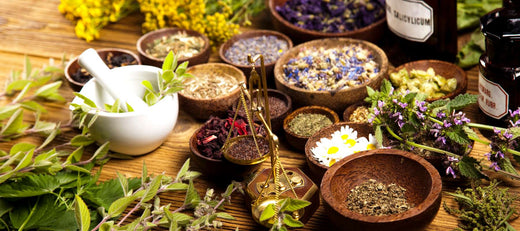Resilient, versatile, and nutrient-dense crops are all ideal choices for anyone who wants to grow food and become more self-reliant. Although you may think of it as a decorative plant, amaranth fills all of those requirements and more. This lovely plant was once revered by the Aztecs for its usefulness, and today it’s experiencing a resurgence.
Why Grow Amaranth?
Amaranth is an extremely versatile and drought-tolerant plant that can thrive in various climates and soil types. Gardeners all over North America can successfully grow amaranth, even in less-than-ideal weather or unpredictable growing conditions. Its rapid growth can easily outcompete weeds and isn’t susceptible to many garden pests beyond aphids and leaf miners. Its deep roots naturally break up and aerate compacted soil. After harvest, the roots quickly break down and enrich the soil with valuable organic matter.
It’s also a beautiful addition to the garden, with showy flowers that are delightful for humans and pollinators alike, improving the overall fertility of the garden. Although pollinators love amaranth, pests are naturally repelled by its strong aroma. Amaranth is also a sturdy companion plant. Some varieties can reach 6’ tall and are sturdy enough to serve as a living trellis for climbing beans, while also providing shade for sun-sensitive plants.
Nutritionally, amaranth is a goldmine. Its seeds provide a gluten-free alternative to grain that’s packed with protein, essential amino acids like lysine, minerals, and vitamins. Cooked amaranth has a porridge-like texture, ideal for breakfasts, or can be popped like popcorn. The leaves can be harvested as a nutrient-rich green leafy vegetable. Young leaves are excellent when eaten raw in salads, while mature leaves taste excellent when sautéed or steamed, much like spinach. It can even be grown as a microgreen!
Planting & Growing Amaranth

Amaranth seeds are tiny, so be careful when you open your packet! To sow directly outdoors, simply sprinkle them on top of well-drained soil and lightly press down. They need light to germinate, so don't bury them deep. If you want to start your seeds indoors, do so 4-8 weeks before your last frost date to give them plenty of time to establish. Seeds germinate quickly, typically within 3-10 days in optimal conditions.
When choosing a spot for your plants, keep its full-grown height in mind. It will block sunlight from other plants, so it is a good choice for pairing with sun-sensitive crops. Amaranth isn’t picky about soil as long as it drains well. Don’t let the soil become waterlogged. The plants can grow in full sun to partial shade.
Harvesting Amaranth

Young leaves can be harvested as soon as plants are established and have plenty of foliage. Mature leaves are best when picked before the plants begin to produce seeds. You can pick the leaves with fingers, scissors, or gardening shears. Just make sure you leave enough behind to allow the plant to keep growing.
Amaranth seeds are ready to harvest after the seed heads are dry and the seeds begin to fall off easily. The seeds of amaranth are very small, and the plants can self-sow easily, so a bucket or a bag can help you catch seeds during the process. Dry your seeds in a well-ventilated area before threshing. To do this, place seed heads in a bag and gently beat them to release the seeds, or rub the seed heads between your fingers or against a mesh screen. Winnow, or separate seeds from plant material (chaff). An easy way to do this is to pour seeds from one container to another while using a fan or breeze to blow away the chaff. Store your seeds in an airtight container to prevent moisture and pests from spoiling the seeds.
If you’ve never grown amaranth before, we highly recommend it as a truly versatile and beneficial addition to your garden. This ancient grain has stood the test of time as a valuable crop that can be grown by even the most inexperienced gardeners. It’s a resilient, adaptable, and beneficial plant that adds beauty to the garden and bounty to your pantry.

























